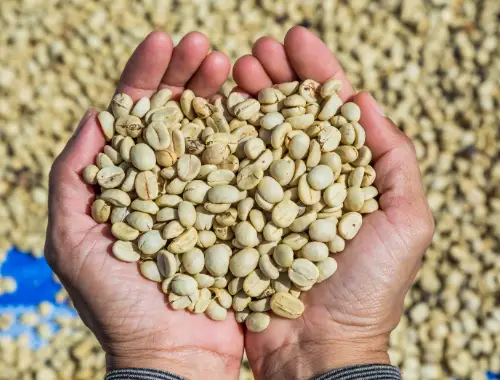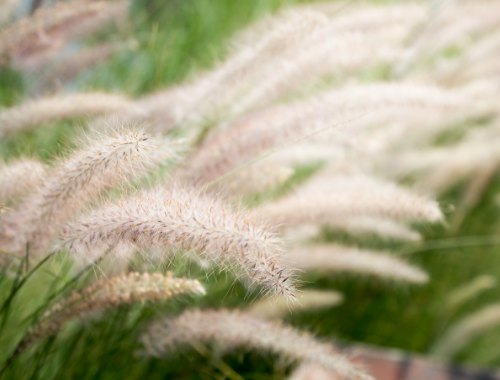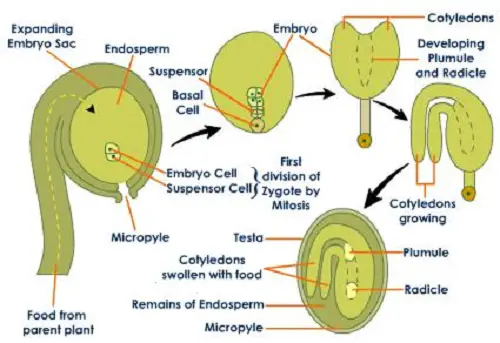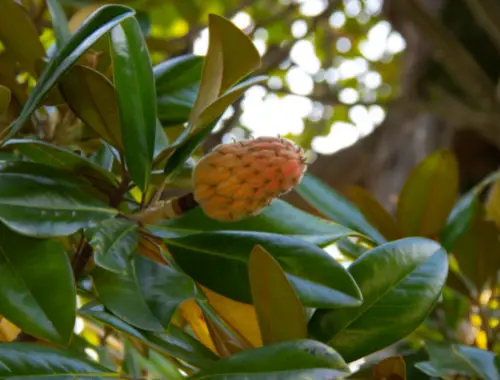The iodine solution is used for staining endosperm to identify distribution and presence of starch. The iodine solution used is known as Lugol’s solution. If the starch comes in contact with the Lugol’s solution, it will turn black or dark purple in colour in just 5 minutes or lesser than that. Starch is an important carbohydrate in terms of commercial and biological aspects that is gathered in the plant depository organs, like the seed endosperm. Starch does not show solubility in water and develops grains that are known as Starch Grains (SGs).
Starch Granules get easily stained by Lugol’s iodine solution and can be seen under a normal microscope. As the seed grows and develops, the starch content declines and it is found that the starch totally vanishes from the endosperm of mature and grown seeds. Maize kernels which have waxy endosperm produce starch and stain blue with iodine; non-waxy endosperm does not produce starch and stains red with iodine (Cailleau et al, 2010).

Figure 3. Stained endosperm examined under the microscope. The starch grains within the endosperm cells are purple in colour.
Starch is the main carbohydrate pool in floral tubers and seedling endosperm, where it appears as granules, consisting of millions of amylopectin compounds assisted by a greater volume of smaller amylose compounds. The largest source of starch is corn, wheat, potato and paddy. Starch present in the endosperm has a significant role to play in the biochemical reactions in both flora and fauna and also possesses commercial significance. It is generated by photosynthesis in green vegetation. Also, it is important form of nutrition for plants.
For e.g. starch granules are to be studied in oat species (Avena sativa). For that, the oat grains are sectioned and image evaluation methodology is used to assess the size, distribution and shape and structure of starch granules in the endosperm. The sections have shown that the oat endosperm consists of two categories of starch granules, i.e. compound starch granules (found in grasses and rice), and simple starch granules which are found in wheat. Because of staining with Lugol’s iodine, we are able to identify timings of granule initiation during the grain growth in different species. For e.g. in Triticeae and oats, simple granules and compound granules show different timings of granule initiation at the time of grain development.
Study of starch granules in endosperm is important as it helps to measure the amount of nutrition in the endosperm. Staining of embryo and endosperm helps to calculate the mean starch content per endosperm cell and the average cell structure can be evaluated as well the ratio of B-Type and simple starch granules. Also, the relative and absolute shapes and size of the starch granule can be assessed. The staining of endosperm has been helpful to study the area inside the seed cell inhabited by the SGs i.e. starch granules.
It has been seen that initiation of both categories of starch granules takes place primarily at the time of growth of early endosperm, when the seed cells are germinating and expanding. Throughout growth, around sixty percent of the starch granules are simple and around forty percent are compound. It is also seen that the proportionality of simple starch granules grows slightly in number during the cell expansion. Thus, it can be said that the volume of simple granules per cell expands more than the compound granules during development (Lindeboom et al, 2004).












Leave a Reply